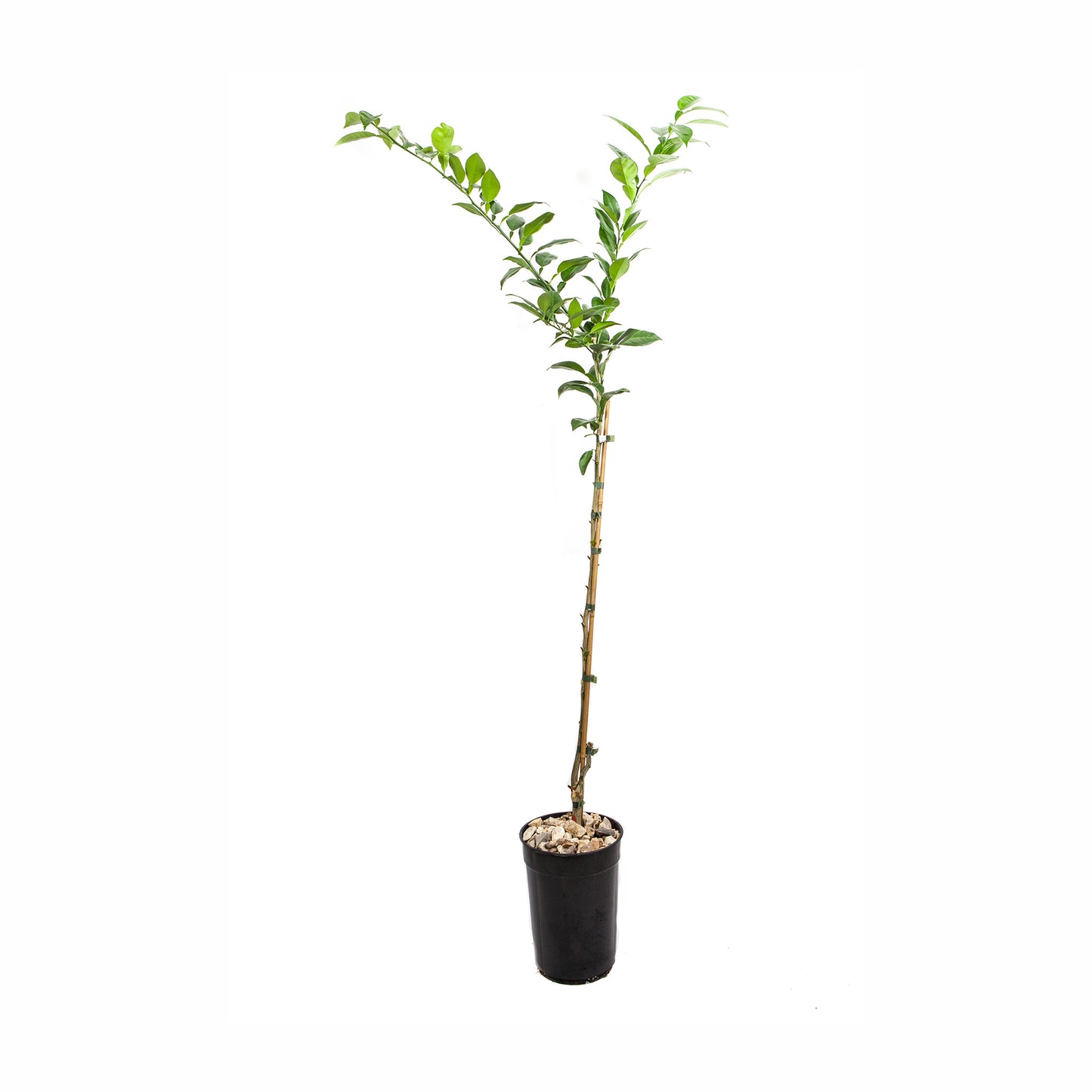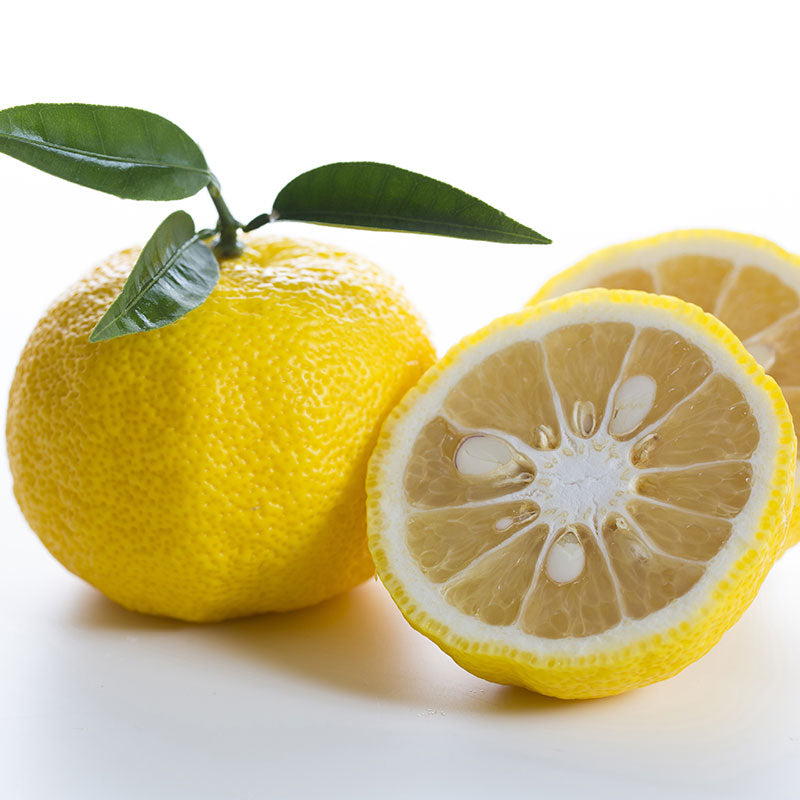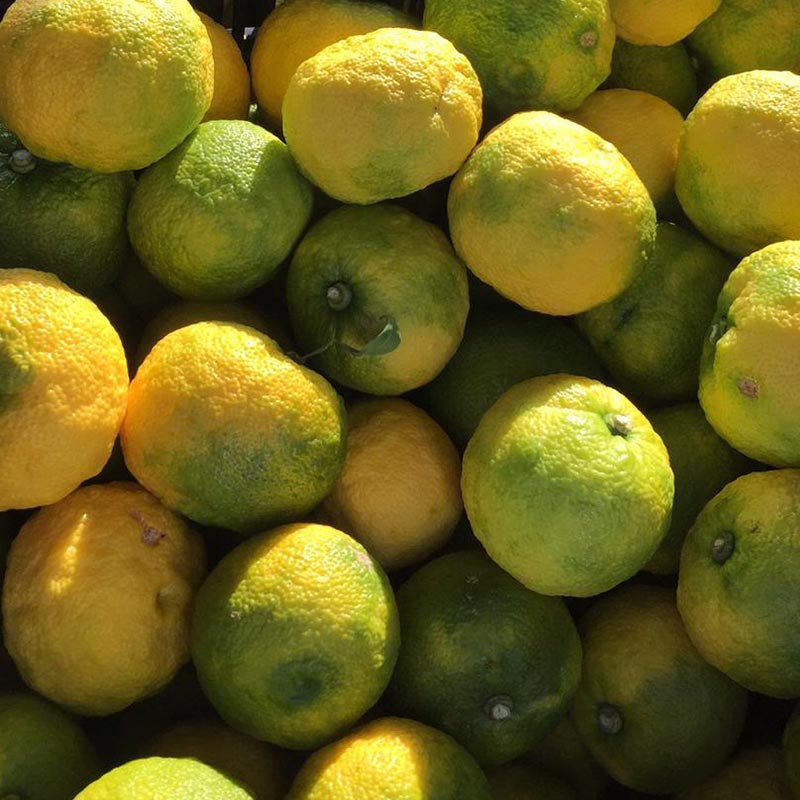These trees are grafted on to a very hardy, deciduous rootstock that will survive temperatures down to –15ºC once the tree is well established. To establish the tree grow in a pot for the first two years and move in winter to protect it from frost. Trees can then be planted out during the spring growing season. This rootstock is not suitable for alkaline soils but will thrive in acidic conditions. Soil and irrigation water should have a pH of no greater than 6.
The Flying Dragon Poncirus trifoliata rootstock is a dwarfing variety that will reduce the height of the tree compared to an un-grafted tree but still allows for heights of 2.5m in optimum conditions. The trees are suitable for growing in pots or in the garden. Trees will lose their leaves in winter to protect them from the cold conditions, fresh leaf growth will emerge in early spring. Slower growing than our non-hardy version the trees are still expected to flower in the spring following delivery, fruits ripen throughout the year ready for harvest during October – December. All trees stand 100-120cm tall (including pot) and were grafted a minimum of 18 months ago.
The yuzu tree is a hybridisation of a sour mandarin and the lemon like Ichang papaeda. It is from the Ichang papaeda that the yuzu inherited its ability to stand cold temperatures. Yuzu is the best known of the Japanese citrus fruits, the juice combines grapefruit and mandarin flavours with unrivalled zest. The skin of the fresh fruit carries a powerful hit of citrus with a striking, floral aroma. An essential element of Japanese cuisine, yuzu is used to flavour ponzus, soy sauces, miso and European chefs have embraced its famously tart juice and zest using it in dishes with fish, white meat, sorbets, ice creams and cocktails.
Planting
Outdoors a sunny, south facing, sheltered spot is desirable. Acidic soils are preferable, clay soils should be mixed with sand to allow for good drainage. Mounding the earth above the soil level is recommended in these conditions. In dry conditions once or twice weekly watering is preferable to little and often. A summer mulch will help maintain moisture and reduce risk of the roots drying out. Water logging is the most common ailment in the UK climate so please follow the drainage advice above and prevent the tree sitting in water.
In containers use free draining compost, additional perlite or hardwood bark will improve drainage if the compost does not already contain these. Irrigation should be controlled to maintain the compost moist and never saturated. Re-pot every 1-2 years increasing the size of the pot each time. If you choose to move your tree in winter remember to use a light pot. Raise the base of the pot above the surrounding ground to allow for free drainage of any excess water.
Caring for your plant
A controlled release, nitrogen rich citrus fertiliser applied in spring will support growth, liquid fertilisers should be applied in low strengths little and often to prevent excessive levels.
The most likely pest attack would come from aphid or mites. Encourage natural predators like ladybirds, lacewings and spiders. If evidence of these pests is seen a spray bottle filled with water and a couple drops of mild dish detergent will usually deter them. Keep trees dust free (mites loves dust) by gently rinsing the leaves with a very mild soap or rinsing outdoor trees with a hose every couple of weeks.
All citrus trees require a period of night time temperatures below 12ºC for optimum spring flowering. If flowering is prolific in the first two years it is recommended to remove some of the fruits when very small so the tree is not over burdened. A first and second year harvest of 6-12 fruits is considered sustainable.
Be warned, yuzu trees wear their hardiness on the outside sporting sharp thorns that will make themselves known if not handled with care. These can be removed if they are a hazard.
Trees may sprout shoots below the graft, these should be removed as soon they are observed.
Harvesting
Highly fragrant, small white flowers appear with the spring and fruit is ready to harvest in October – December for a seasonally citrus lift to Christmas and the New Year.
Pick from the tree when the skin is a bright yellow. Dark spots or stains on the skin are normal and a sign of ripeness. Any early fallers can be used green for an extra tart yuzu juice. The zest of both ripe and unripe yuzu is added to soups, dressing, drinks and is used as a topping to sushi and fish. If you have a bumper harvest yuzu freezes whole with excellent results for both the juice and the zest.
Email me when available




